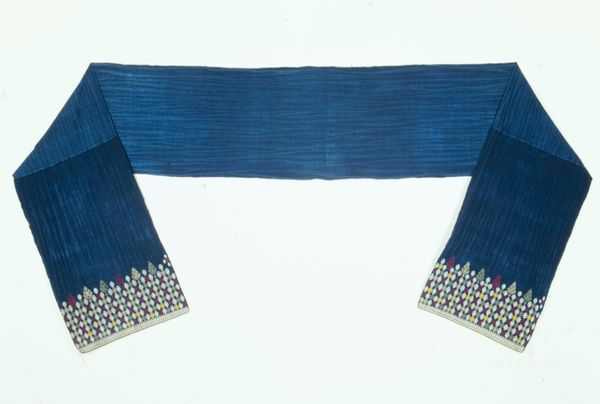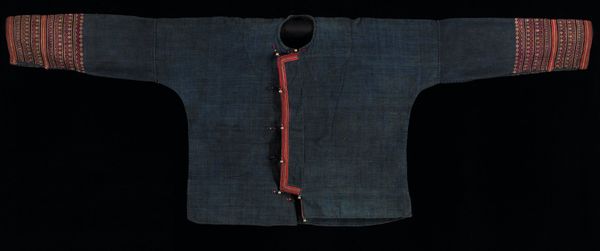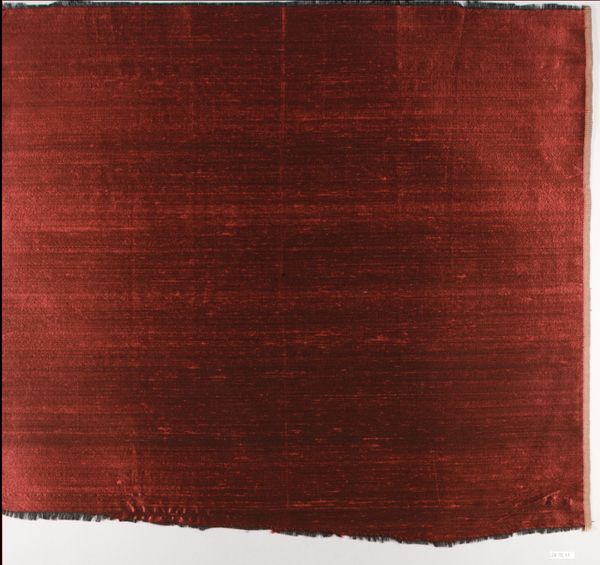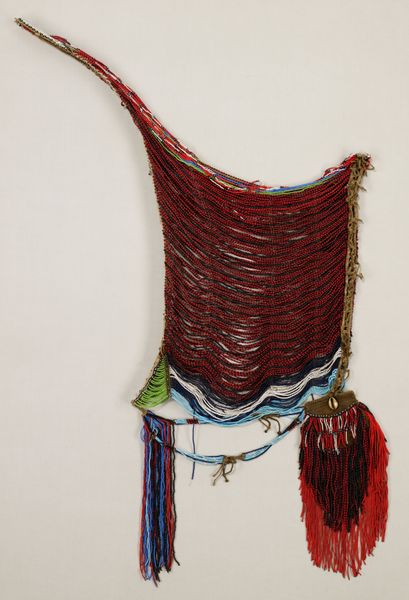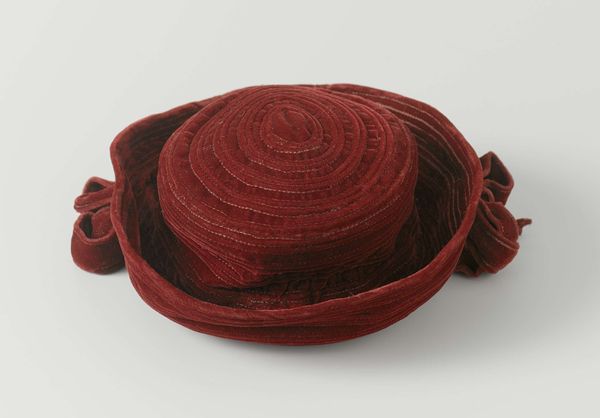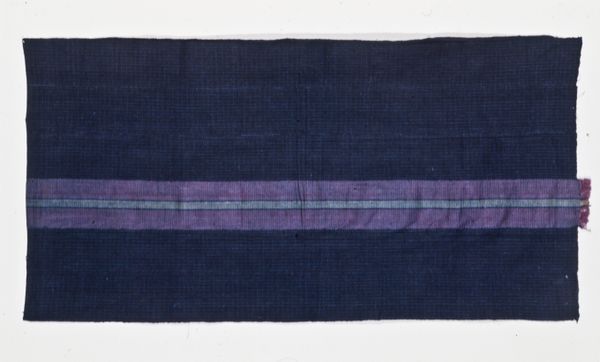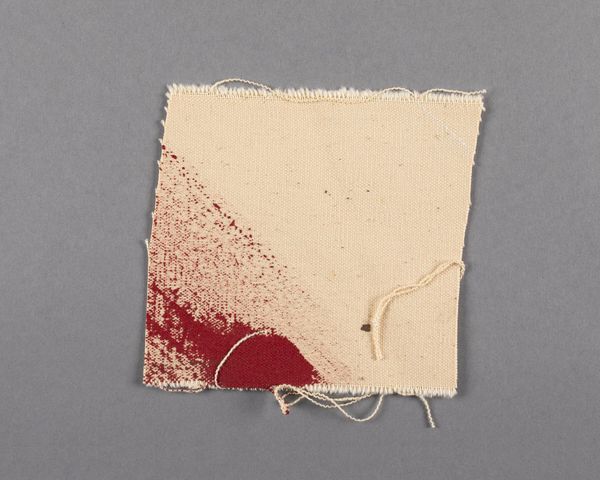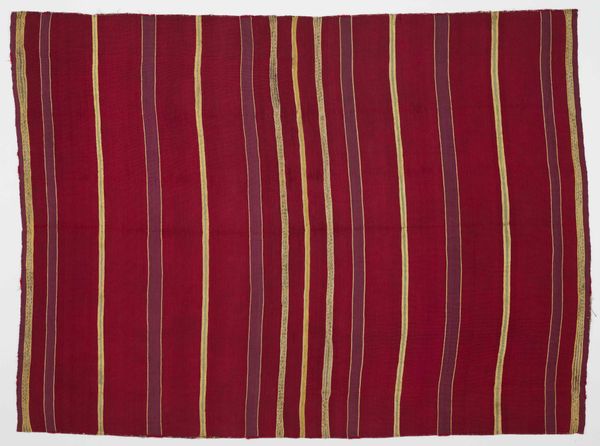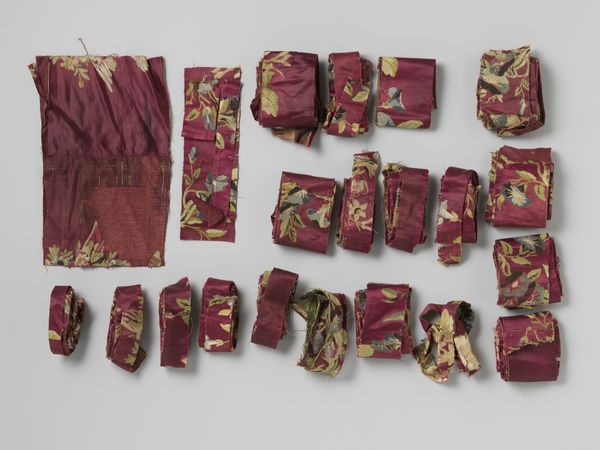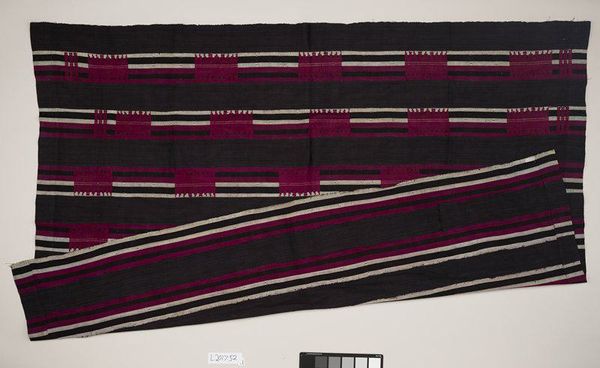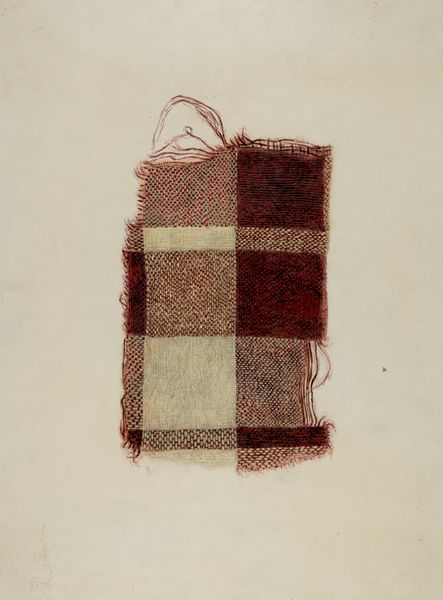
textile
#
baroque
#
textile
Dimensions: width 88.5 cm, height 6.5 cm, depth 62 cm, height 55.0 cm, length 65.0 cm
Copyright: Rijks Museum: Open Domain
Curator: Welcome. Here we have what's known as the "Zegeltas Johan de Witt," a seal bag crafted sometime between 1600 and 1700, its maker, unfortunately, lost to history. Editor: The first thing that strikes me is the deep burgundy color. It’s very rich, almost regal. The velvety texture also adds to the sense of opulence. Curator: Indeed. As a textile piece from this period, consider how this material was sourced, dyed, and woven. Who were the laborers? Was this locally produced or part of a larger trade network? Such a luxurious item signifies social status. Editor: I see what you mean. But formally speaking, observe how the square shape and vertical lines create a sense of balance. Even the tassels on the cords contribute to a satisfying symmetry. There's a simplicity, despite the richness of the fabric, that's very effective. Curator: Think about the bag’s function. Seals were crucial for authenticating documents, making this bag an object connected to law, trade, and power. This shifts our interpretation from mere aesthetics to questions of utility and agency. Editor: I’m struck by how time has altered the surface, with noticeable wear and fading that tells its own tale. The piece appears delicate, yet you sense its robustness, capable of securing and transporting items of consequence. Curator: Precisely! Understanding its creation, application, and journey reveals layers of significance beyond its physical appeal. Editor: Looking closely at its texture and form gives you an idea of a different age. But with some new insight of production behind this Baroque piece, one may come away from it understanding more about an interesting time in history.
Comments
No comments
Be the first to comment and join the conversation on the ultimate creative platform.

